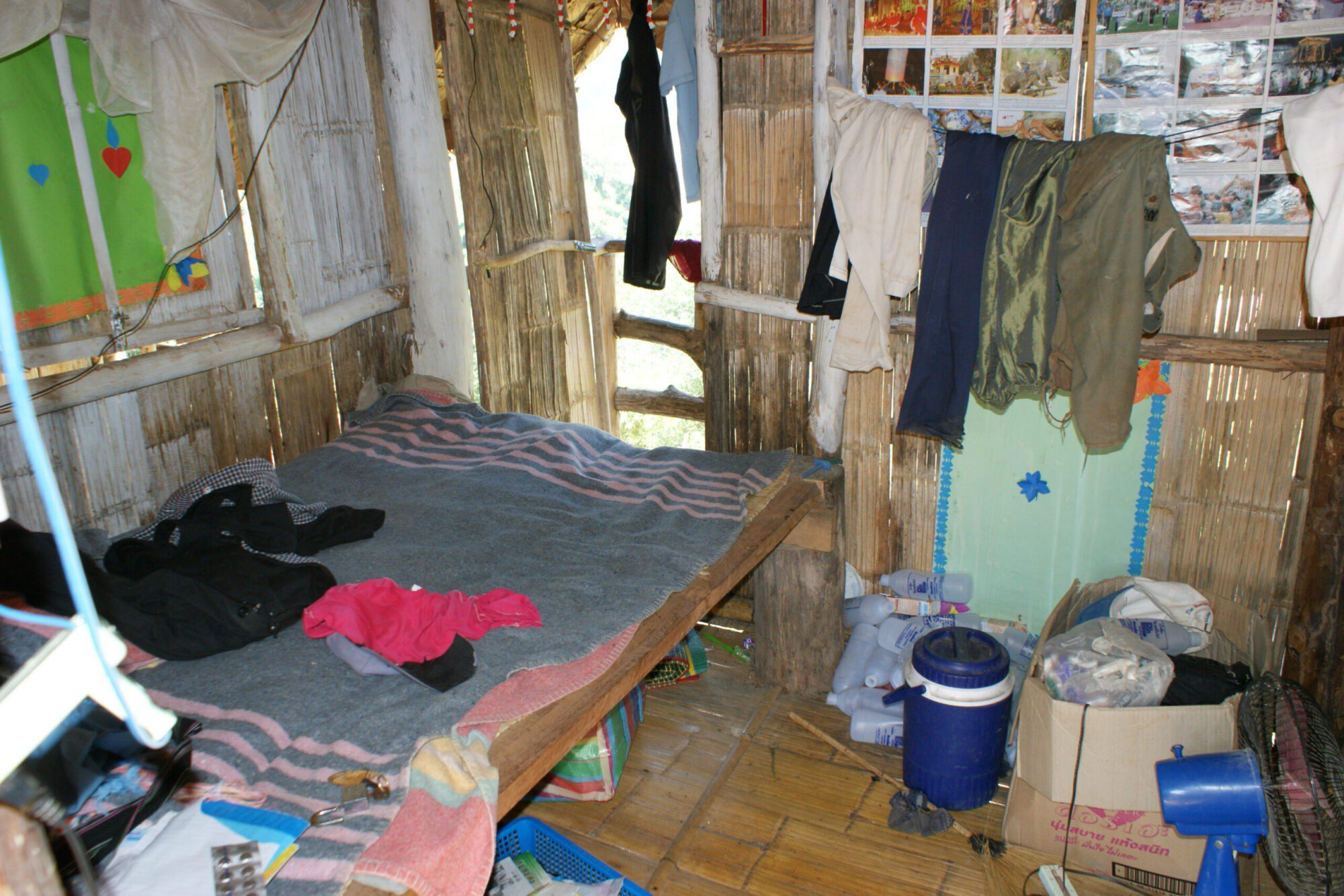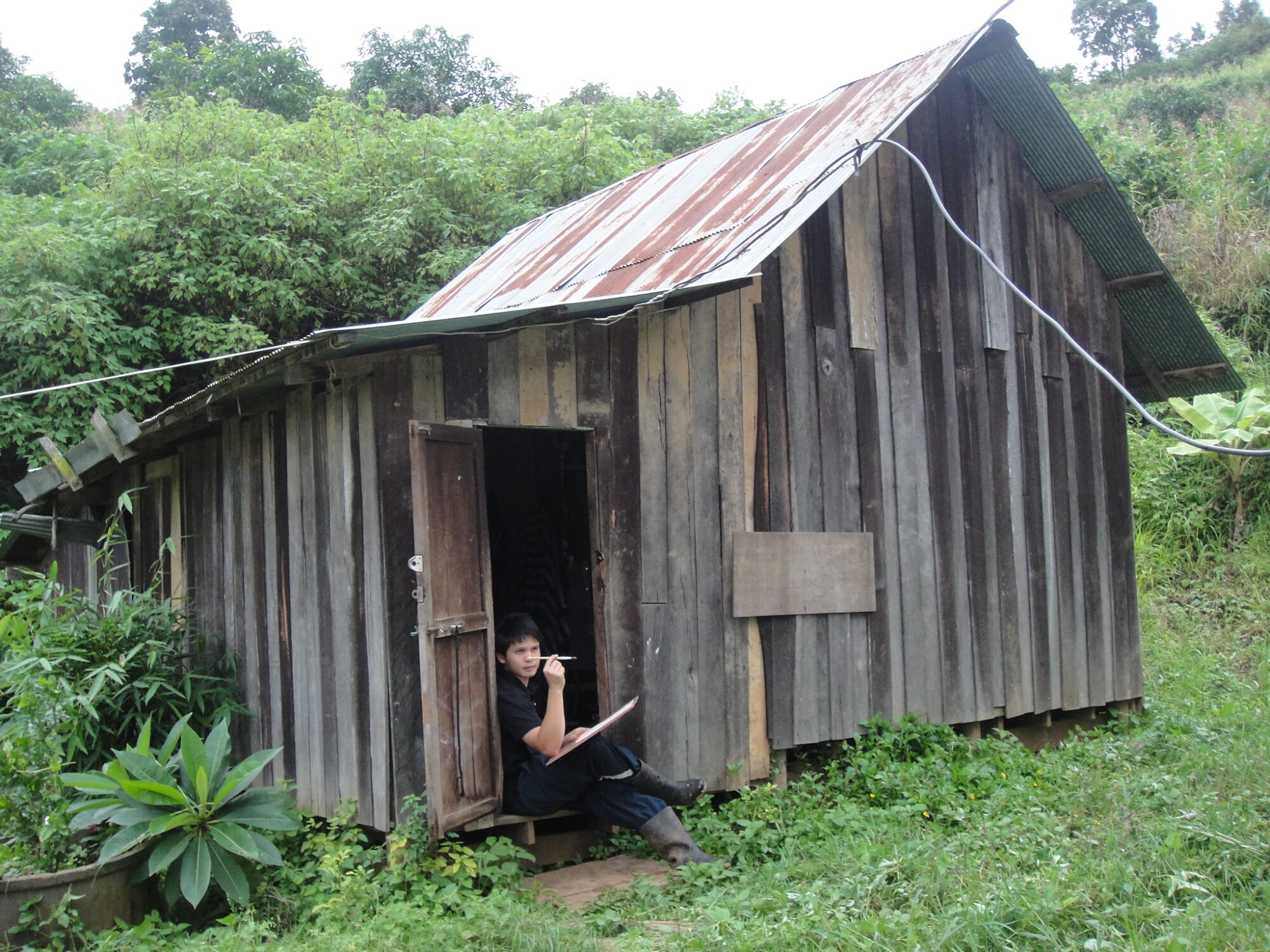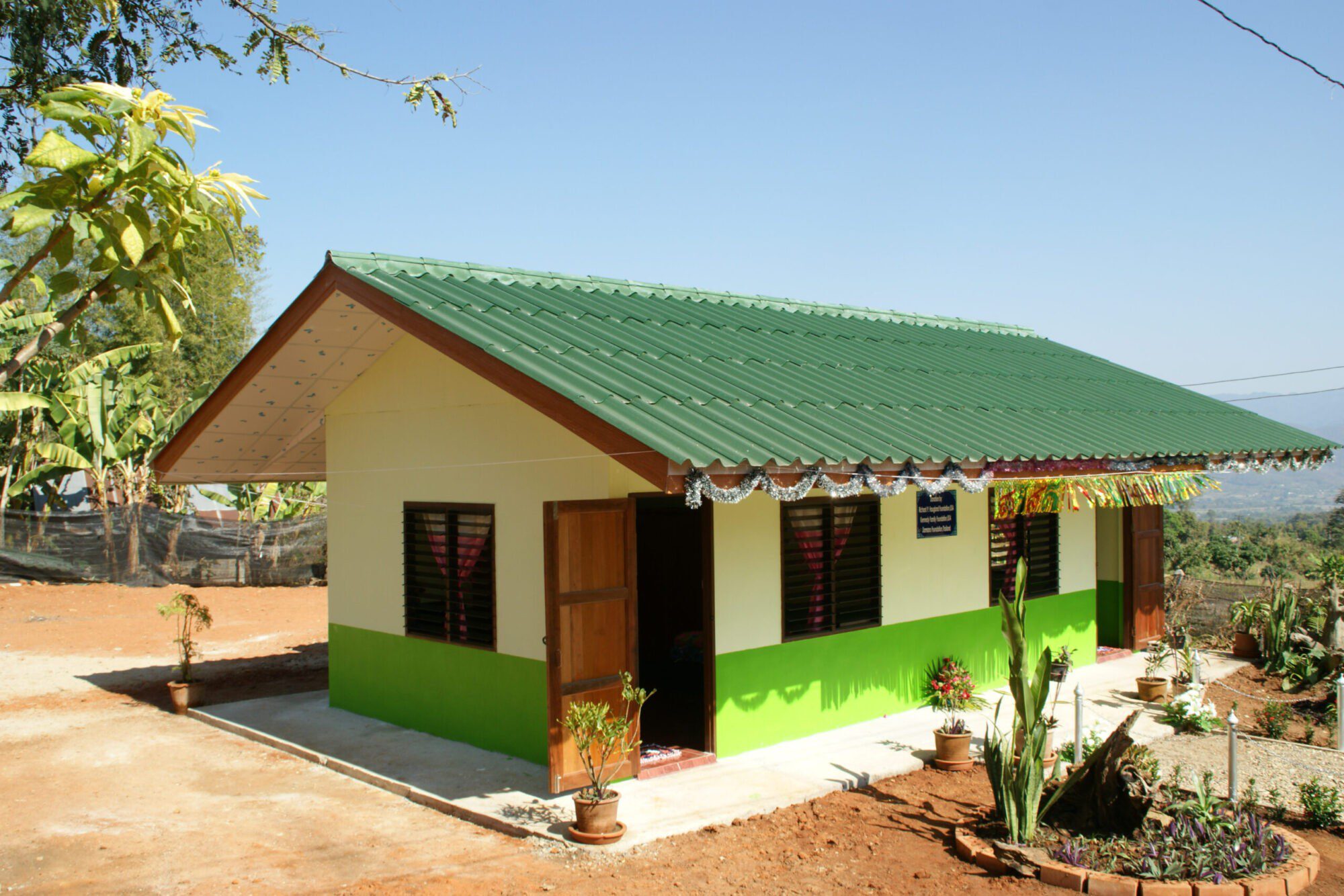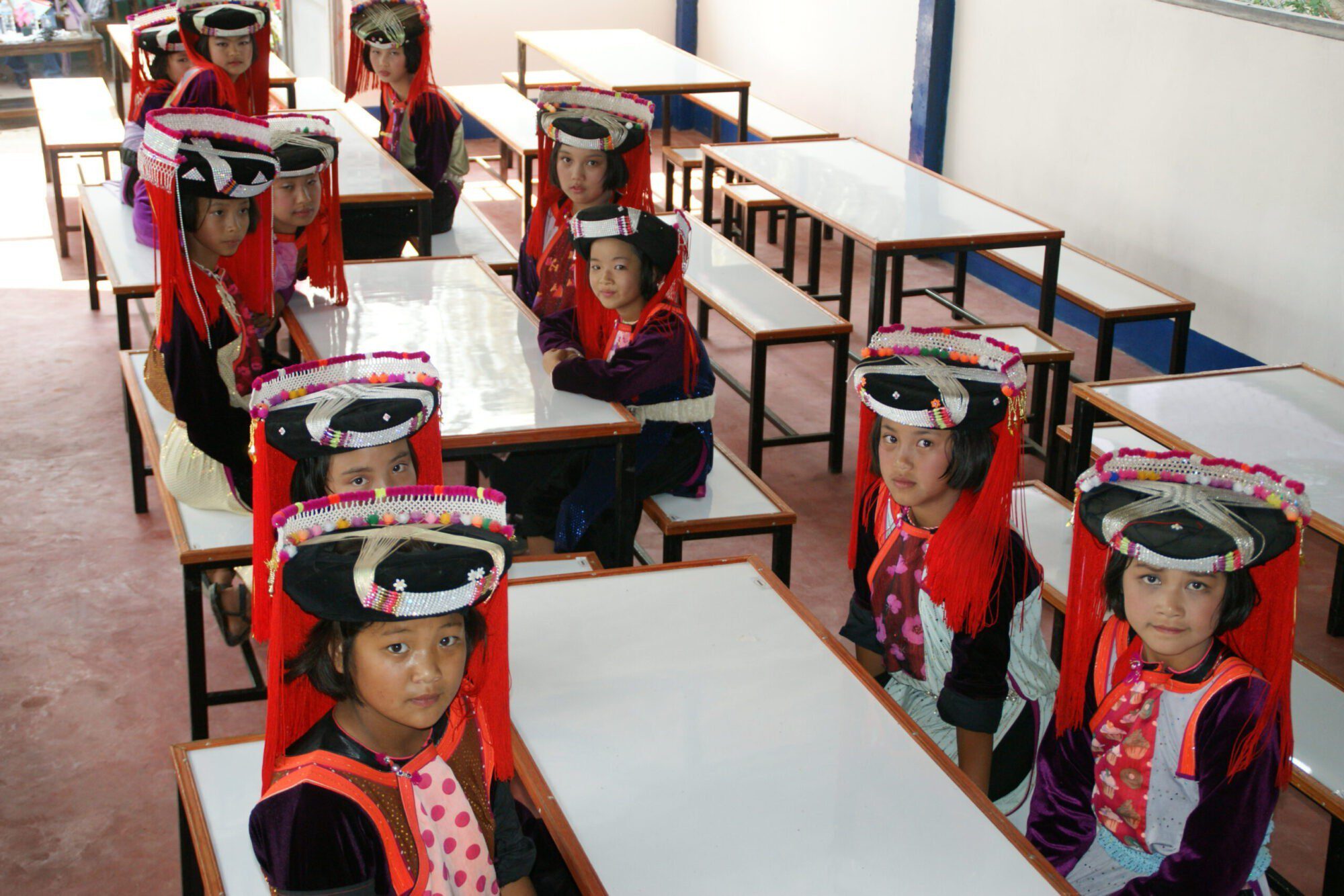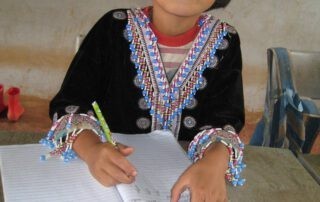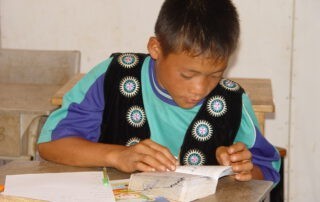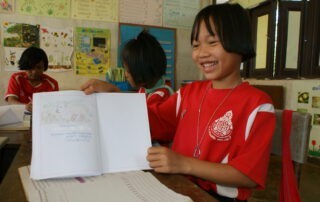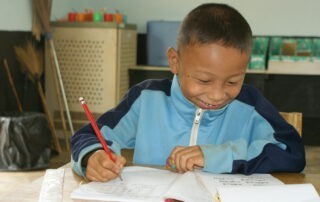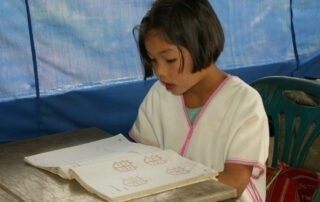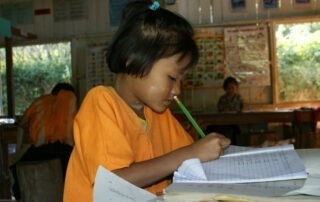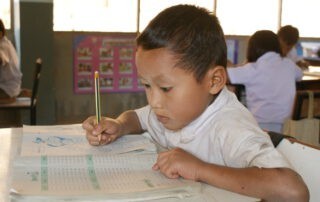Getting Children to School
The Samsara Foundation was a medium sized Thai NGO of Dutch origin that was active in the field of improving school facilities in Thailand's Northwestern province of Mae Hong Son. The rugged terrain in this mountainous area has poor, difficult infrastructure (the province is among Thailand's least developed) and this has affected the quality of education. So, Samsara's mission was: "Getting Children to School".
School facilities as we found them
In the Mae Hong Son area along the border with Burma / Myanmar, the Karen, Hmong, Shan, Lisu and Lahu peoples constitute the majority population. The Thais in this province live predominantly in urban centres and in the valleys, whereas the Karen, Hmong, Shan, Lisu and Lahu make up the vast majority of the mountain peoples.
In the past, many children in this part of Thailand could not even get primary education since the distance between home and school was too far. They would have had to walk for hours every day to attend school. Even when they could stay in school dormitories and eat there, the facilities were often so bad – broken, dirty, too crowded – that this was not an attractive option.
A similar story can be told for the teachers. The Thai government requires all recently graduated teachers to start their teaching career at mountain schools. In many cases, the quality of teachers' dormitories was so bad that young teachers refused to live there, or their parents objected.
However, with better housing conditions, teachers from other regions are more willing to stay at the mountain schools for some years at the start of their teaching career. Samsara, therefore, provides dormitories for both children and teachers. In addition, they also provide clean water to the schools, hygienic kitchens, canteens and toilet buildings. Also, they installed solar panels enabling school television and better communication with the outside world at the most remote schools
Through Samsara's activities, thousands of children from mountain villages located far away from the nearest school can now comfortably stay in solid dormitories, drink clean water, eat good food in canteens which are prepared in hygienic kitchens, use clean toilets and enjoy the use of school television. The same goes for the teachers. So it is with good reason that Samsara's name in the Thai language stands for three essentials: Good Education, Good Health and Good Life.
School facilities as we built them
Between 2004 and 2016 the Samsara Foundation has realised the following facilities
- 77 dormitories for students
- 108 dormitories for teachers
- 103 school canteens
- 6 libraries, and providing text books to 65 schools
- 88 toilet buildings
- 100 small constructions such as kitchens
- 86 catchment tanks for rainwater
- 125 large clean water installations
- 60 small clean water installations
- 80 solar power driven projects
- 80 sets of furniture for existing buildings
- 25 buildings for washing and drying clothes
- Scholarships for 800 students, covering the expenses for on average three years
And now they are at school
The Samsara Foundation made 12 movies, each of maximum 4 minutes about its work and achievements
Samsara 1 This is the region where Samsara works
Samsara 2 The effects of rain in the province of Mae Hong Son
Samsara 3 The impact of rain on education in Mae Hong Son
Samsara 4 What we find on a first school visit
Samsara 5 What Samsara does at the Mountain Schools
Samsara 6 This is the School Population
Samsara 7 How clean water is organised for the schools
Samsara 8 School Life outside of Lessons
Samsara 9 The Furniture Workshop of Ratana
Samsara 10 Electricity enlightens Education
Samsara 11 Building Facilities at Remote Schools
Samsara 12 Handover and Inauguration of Samsara's Facilities
Book – Getting Children to School
This book offers a model of development assistance that Samsara has found to be extremely effective. They believe it can be of interest and useful for other small-sized and start-up NGOs that aim to have a significant punch beyond their weight. It can assist in avoiding some of the pitfalls that beset even the most careful and responsible NGOs.
My Contribution and Lessons Learned
The above story is the story of the Samsara Foundation. My role in this and the lessons I learned from this period are now next.
The Samsara Foundation in Thailand was carried out by two volunteers: Ratana who was responsible for communication with the schools and the Provincial Department of Education organized the production of furniture for all facilities and arranged the organization of 250 clean water installations and 90 solar energy projects. I was responsible for project management, fundraising, contact and reporting to the donors. Together we supervised all construction projects.
It was great to work in the beautiful mountainous environment of Mae Hong Son province. It was fantastic to be able to work with all those school directors and teachers at the mountain schools. Many of the lessons I have learned are described in the book "Getting Children to School" but for me personally, some important principles of working remain.
In development work, projects must match the local situation, the local needs, but above all what they can handle locally. They, the target group, must be willing and able to handle the project.
Sticking to one thing is an important guideline to get projects realized. If you want to realize a project at a school, concentrate and limit yourself within the decision-making structure of education (Ministry of Education-top-to-school-bottom). Then don't also do a health care project. Then you have to deal with the decision-making structure within health care (Ministry of Health-top-to-clinic-bottom).
Preventing loss of face is often interpreted by Westerners as "you have to admit a lot" "you have to be careful in approach". I tend to disagree. You must be clear, precise and principled in the quality requirements of the project, in the project timetable and in how the money is spent, not to mention the result to be achieved. That's what your sponsors demand. That's what you stand for. It goes without saying that this must be in line with what is locally possible. But after that, a deal is a deal, and a contract is a contract. Never be weak. Preventing loss of face is how you resolve conflict. Do not corner people, never criticize where the lesser and the superior are present in the hierarchical line. Avoid conflicts by anticipating, and knowing the local situation, such as the presence of materials, prices, circumstances and hierarchy. Doing your homework, transferring knowledge, and training people to work together. That's half the battle.
Finally, I would like to commemorate my deceased soulmate Manus, who has always supported me, also in these fourteen years of work for the Samsara Foundation, and who also took on all the photography of the projects, which was so important in the reports to the sponsors.




